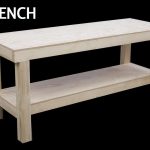Working with Wood: A Beginner’s Guide to Woodworking
Woodworking is an incredibly rewarding craft that allows you to create functional, beautiful, and unique items. Whether you’re building a simple shelf or a complex piece of furniture, working with wood provides endless possibilities for creativity and craftsmanship. This blog post will cover the basics of woodworking, essential tools, and beginner-friendly projects to help you get started.
Why Work with Wood?
Wood is a versatile material that’s easy to shape, durable, and naturally beautiful. Whether you’re into crafting small items like wooden pens or taking on larger projects like building sheds or furniture, wood is the perfect material to work with. Here are a few reasons why woodworking is so popular:
- Versatility: Wood can be cut, shaped, and finished in a variety of ways to suit different styles and functions.
- Durability: When properly treated, wood can last for generations, making it a great material for both indoor and outdoor projects.
- Sustainability: Wood is a renewable resource, and many types of wood are harvested sustainably, making it an eco-friendly option for crafting.
Essential Tools for Woodworking
Before diving into your first woodworking project, you’ll need to gather some essential tools. Having the right tools will not only make your work easier but also ensure accuracy and safety. Here are some must-have tools for beginners:
- Measuring Tools
- Tape measure, combination square, and marking tools for precise measurements.
- Hand Tools
- Handsaw: For cutting wood manually.
- Chisels: For carving and shaping wood.
- Hammer: Essential for assembling your projects.
- Power Tools
- Circular Saw: Great for making straight cuts in wood.
- Jigsaw: Ideal for cutting curves and intricate shapes.
- Drill: For making holes and driving screws.
- Sandpaper and Sanding Block
- To smooth the surface of the wood and prepare it for finishing.
- Clamps
- Used to hold pieces of wood in place while cutting, gluing, or assembling.
Best Types of Wood for Beginners
When you’re just starting, selecting the right type of wood can make a big difference. Some woods are easier to work with than others, and as a beginner, it’s better to start with something manageable. Here are some beginner-friendly woods:
- Pine
- Softwood that’s easy to cut, shape, and sand. It’s affordable and readily available, making it perfect for practice projects.
- Maple
- A hardwood with a smooth grain that’s easy to work with. It’s great for furniture and decorative items.
- Cedar
- A lightweight, softwood that’s resistant to decay, making it ideal for outdoor projects.
- Birch
- Another hardwood with a fine, even grain that’s ideal for beginners looking to create durable and attractive projects.
Beginner-Friendly Woodworking Projects
Once you have your tools and wood ready, it’s time to start your first project! Here are a few simple, beginner-friendly woodworking projects to help you hone your skills:
1. Simple Wooden Shelf
Building a small, straightforward shelf is a great project for beginners. It teaches you basic measuring, cutting, and assembly techniques, and you’ll end up with a practical, useful piece.
2. Cutting Board
A cutting board is an easy project that lets you practice sanding and finishing techniques. It’s a functional item that’s also great for gifting.
3. Wooden Pen
Turning pens is a fantastic way to get into woodturning. You can start with a simple pen kit and learn the basics of spindle turning while crafting a beautiful, personalized writing instrument.
4. Birdhouse
A birdhouse is another easy project that’s perfect for beginners. You’ll learn how to cut and assemble wood, and you’ll get to enjoy the sight of birds nesting in your creation!
5. Wooden Spoons
Spoons are a fun and practical project that will introduce you to shaping and carving techniques. Start with a small piece of hardwood and hone your skills while creating a functional kitchen item.
Finishing Your Wood Projects
After crafting your wooden masterpiece, the finishing stage is crucial to protect your work and enhance its appearance. There are several finishing techniques you can use, including:
- Sanding: Always sand your project to create a smooth, even surface before applying any finish.
- Staining: Stains add color to the wood while allowing the natural grain to show through.
- Varnishing: Varnish provides a durable, protective layer to your wood project, making it resistant to scratches and wear.
- Oiling: Applying oil like linseed or tung oil can enrich the wood’s natural color and provide a low-sheen finish.
Woodworking Safety Tips Working with Wood
Safety is critical in woodworking. Follow these basic tips to keep your workshop safe:
- Wear Protective Gear: Always wear safety glasses and ear protection, especially when using power tools.
- Work in a Well-Ventilated Area: This is especially important when sanding or applying finishes, as wood dust and fumes can be harmful.
- Keep Your Workspace Organized: A tidy workspace reduces the risk of accidents.
- Stay Focused: Never rush through a project or use tools when you’re tired, as this increases the likelihood of mistakes or injury.
Conclusion
Working with wood is a satisfying and rewarding hobby that allows you to create items that are both functional and beautiful. With the right tools, materials, and a bit of practice, you can build anything from simple shelves to intricate furniture pieces. Start small, focus on improving your skills, and most importantly, enjoy the process of bringing your woodworking ideas to life.
Whether you’re crafting a wooden spoon or designing custom furniture, woodworking opens up endless possibilities for creativity and craftsmanship.


